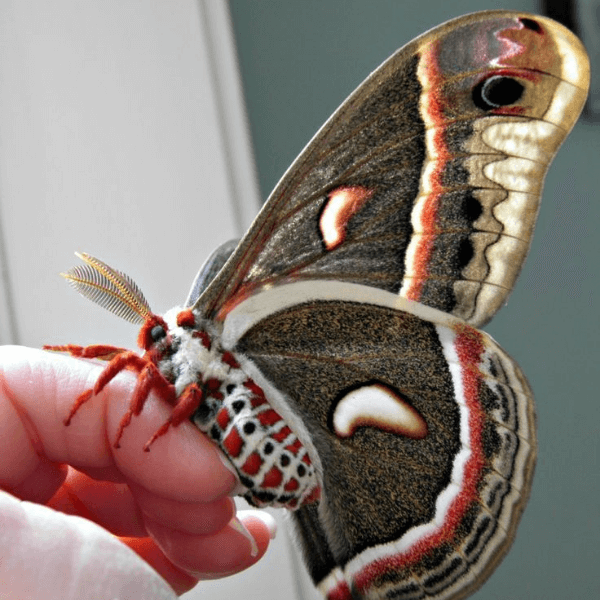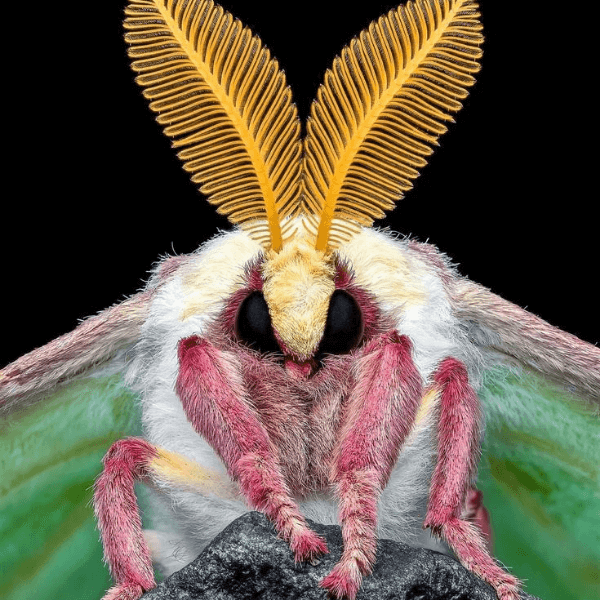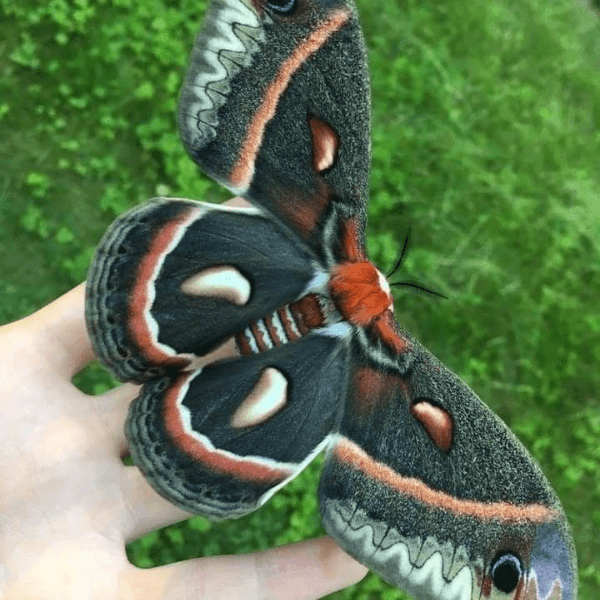When it comes to mystical creatures hiding in plain sight, the cecropia moth (aka Hyalophora cecropia) is the undisputed queen of the night. With its velvet wings, hypnotic eyespots, and impressive size, this gentle giant of the moth world isn’t just a biological wonder—it’s a walking (well, fluttering) metaphor.
Meet the Nature’s Velvet Secret

The cecropia moth is North America’s largest native moth, with a wingspan that can stretch over 6 inches. Its rich rust-red color, crescent-shaped wing spots, and feathery antennae make it instantly unforgettable. But despite its striking looks, it’s completely harmless. No, cecropia moths don’t sting, bite, or pose any threat to humans. (Relax. It’s not here to haunt you—unless you count hauntingly beautiful.)
They belong to the silk moth family, which means they don’t eat as adults. In fact, their entire adult life is focused on one thing: love. They live for just 7 to 10 days, fluttering at dusk in search of a mate before fading like a dream.
From Egg to Enigma: Cecropia’s Life Cycle
It all starts with cecropia moth eggs, which are laid in small clusters on leaves of host plants such as cherry, maple, and birch. These eggs hatch into cecropia caterpillars—big, neon-green munchers decorated with bright blue and orange nodules. (They look like they escaped from a Pokémon evolution chart.)

It’s no wonder that humans have always looked to animal life cycles for inspiration. The stages of the cecropia moth—from vulnerable egg to voracious caterpillar to dormant cocoon to winged mystic—mirror our own transformations. Just like them, we shed skins, retreat, grow quietly, and one day emerge—different. Maybe even luminous.
After weeks of relentless eating, they spin an impressive cecropia cocoon—a papery brown fortress often found clinging to branches. Inside, the transformation begins. By spring, a fully formed moth emerges, ready to live loud and love briefly. That’s the magic.
Male vs. Female: Who’s Who in the Moth World?
Yes, there’s a way to tell them apart. A male cecropia moth boasts larger, bushier antennae—used to detect the female’s pheromones from miles away. Females, on the other hand, are usually bigger-bodied (they’re carrying all those eggs, after all) and tend to wait for suitors rather than fly around.
But, what to feed a cecropia moth caterpillar? Stick to their favorites: willow, dogwood, apple, or cecropia moth host plants like wild cherry. But once they’re moths, it’s a no-food zone. They don’t eat. They just exist—gloriously.
Symbolism: What Does the Cecropia Moth Mean?
In the symbolic realm, the cecropia moth is a powerhouse. Its short life and nocturnal elegance represent:

- Transformation (the whole caterpillar-to-moth glow-up is pretty obvious)
- Surrender (they don’t resist change—they become it)
- Ephemeral beauty (reminding us that the most beautiful things don’t always last)
So if you’re asking, what does the cecropia moth symbolize?—think rebirth, intuition, and embracing life’s fleeting moments. It’s a symbol often tied to the moth spirit, which urges us to follow inner light even in the dark.
Spiritual Meaning: More Than Just Wings
Seeing a cecropia moth at night or finding one near your home may feel like a quiet nudge from the universe. Across many belief systems, moths are considered messengers from the unseen. They flutter through the veils—between reality and dreams, conscious and subconscious.

If you’ve ever wondered, what is the spiritual meaning of the moth?—the answer lies in its attraction to light. Moths remind us to follow our inner truth, even if it leads us through shadows.
The cecropia moth, in particular, adds a layer of ancestral wisdom. It may symbolize a spirit guide visiting, or the start of a personal metamorphosis. It’s not rare to see a cecropia moth, but it is significant. So if one crosses your path? Pay attention.
Is the Cecropia Moth Rare?
Despite their elusive aura, cecropia moths are not considered rare—but they are secretive. Since they’re nocturnal and short-lived, most people simply miss them. Urbanization and pesticide use have reduced their numbers in some areas, so a sighting can still feel like a magical encounter.
And no—they don’t sting. Or haunt. Or read your thoughts.
But yes—they do leave an impression.
Carry the Magic
Moths don’t just visit us—they mark moments. If the cecropia moth speaks to your soul, why not wear its energy close to your heart?
Coventum’s collection of moth necklaces channels the mystery, transformation, and spiritual symbolism these creatures represent. From dark elegance to moon-kissed wings, each piece is a talisman of metamorphosis.
✨ Carry the magic. Wear the message. Let the moth lead you.
The Velvet Oracle
This moth is a gentle reminder that transformation can be soft. That beauty can live in the dark. That life doesn’t have to last long to mean something.

Whether you’re drawn to it for its size, its symbolism, or its silent wisdom, the hyalophora cecropia moth invites you to embrace change, trust your evolution, and glow quietly, even if no one’s watching.
If you love the energy of the luna moth, the cecropia moth might just be your next favorite familiar.
And if you ever spot one on your windowsill at midnight—don’t freak out. That might just be your transformation, knocking.
References:
- Smithsonian Magazine: Meet the Cecropia Moth, North America’s Largest Moth
- National Wildlife Federation: Cecropia Moth (Hyalophora cecropia)
- What’s That Bug?: Cecropia Moth Life Cycle and Meaning

